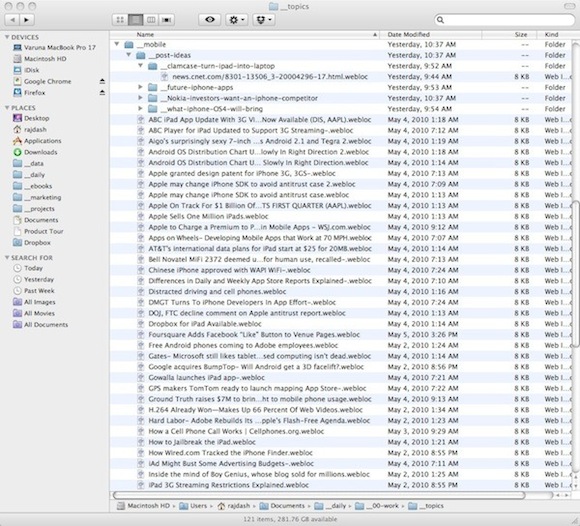 I bet you didn’t know that a lot of the things you need to know to be a good blogger were taught to you before you could even write your name. It’s true! A lot of the things you learned in Kindergarten apply to blogging and other aspects of your social web activities.
I bet you didn’t know that a lot of the things you need to know to be a good blogger were taught to you before you could even write your name. It’s true! A lot of the things you learned in Kindergarten apply to blogging and other aspects of your social web activities.
Don’t believe me? Keep reading to learn about 10 of those things you learned in Kindergarten that make you a better blogger.
1. You need to be polite.
This one is a no-brainer. If you want to build your audience, then you need to do what your Kindergarten teacher told you and be nice and respectful to others, even if you don’t agree with them.
2. You need to share.
At 5-years old, we learned to share toys, but as bloggers, we need to share each other’s content, ideas, conversations, and so on if we want our blogs to grow.
3. You need to take your turn.
In Kindergarten, we learned not to cut in line, and as bloggers, we can apply that lesson to allowing others to have their say. While you might not agree with a comment left on your blog, let others have their turn to share their opinions, and then enter into an adult-conversation to discuss the issue further.
4. You need to say thank you.
This goes without saying, but showing your appreciation is extremely important to helping you build relationships across the social web.
5. Don’t run with scissors.
Be careful what you publish on your blog and follow the written and unwritten rules of the blogosphere to ensure you don’t put yourself in a bad situation.
6. It’s not nice to take other people’s stuff.
Don’t scrape content, don’t use images without permission, and don’t try to pass off any kind of work that you did not create as your own.
7. It’s really hard to get gum out of your hair.
Your words live online. Once you publish them, you might not be able to remove them. Always think about how the content you publish will affect you and others now and in the future.
8. Don’t hang upside-down on the monkey bars while wearing a skirt.
Avoid getting too personal on your blog. It might seem like a good idea to publish those funny pictures of you doing a keg stand at a frat party on your blog, but if a hiring manager sees them a year from now, you might think differently about putting those pictures out there for the world to see.
9. I’m rubber, you’re glue, whatever you say bounces off me and sticks to you.
People will say mean things about you online. It’s inevitable. You need to have a thick skin to be a blogger.
10. Raise your hand.
Write about what you know and don’t be shy about it. Be confident and don’t be afraid to share your knowledge, opinions, and yourself on your blog.
Image: stock.xchng


 If you’re an American blogger, the FTC (Federal Trade Commission) might be watching you, to see if you’re disclosing any information in your blog posts that suggest you received some benefit, whenever you mention some product, service or company. That’s due to their blogging and new media disclosure guidelines that went into effect last year. Yes, it’s more work for a fast-paced workflow, but it simple once you get into the habit. The basic rule of thumb: don’t keep secrets if you’re trying to influence readers.
If you’re an American blogger, the FTC (Federal Trade Commission) might be watching you, to see if you’re disclosing any information in your blog posts that suggest you received some benefit, whenever you mention some product, service or company. That’s due to their blogging and new media disclosure guidelines that went into effect last year. Yes, it’s more work for a fast-paced workflow, but it simple once you get into the habit. The basic rule of thumb: don’t keep secrets if you’re trying to influence readers. How much time do you need to put into a niche before you can declare yourself an expert? Well, many bloggers seem to disagree, judging by their self-proclamations after only a few months, but once upon a time you were classified as an expert if you had spent roughly 10,000 hours on a skill, in a focused, structured manner. If we’re referring to a career job, at roughly 40 hours/week, that comes out to about five years. But when it comes to working online and establishing your expertise, the Web doesn’t wait around. Five years is too long, since Web technology is always changing.
How much time do you need to put into a niche before you can declare yourself an expert? Well, many bloggers seem to disagree, judging by their self-proclamations after only a few months, but once upon a time you were classified as an expert if you had spent roughly 10,000 hours on a skill, in a focused, structured manner. If we’re referring to a career job, at roughly 40 hours/week, that comes out to about five years. But when it comes to working online and establishing your expertise, the Web doesn’t wait around. Five years is too long, since Web technology is always changing. If you have a Mac or PC computer, there’s a simple way to locally bookmark Web pages that you’re browsing or researching en masse that keeps you browser-independent: file folder shortcuts. This method keeps you from having to open multiple Web browser tabs or bookmark all the URLS or worse, copy and paste links into some sort of list. It is a simpler former of bookmarking, but avoids some of the other methods’ limitations. Note: I haven’t tried the following tip on a Linux system, but it might work similarily. I tested on a Mac (10.6.x Snow Leopard) and a PC (Win Vista).
If you have a Mac or PC computer, there’s a simple way to locally bookmark Web pages that you’re browsing or researching en masse that keeps you browser-independent: file folder shortcuts. This method keeps you from having to open multiple Web browser tabs or bookmark all the URLS or worse, copy and paste links into some sort of list. It is a simpler former of bookmarking, but avoids some of the other methods’ limitations. Note: I haven’t tried the following tip on a Linux system, but it might work similarily. I tested on a Mac (10.6.x Snow Leopard) and a PC (Win Vista).
 Image by
Image by